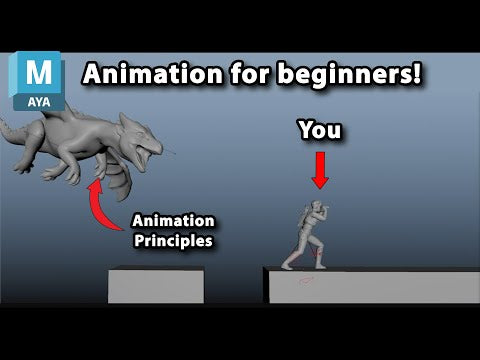Your Cart is Empty
Customer Testimonials
-
"Great customer service. The folks at Novedge were super helpful in navigating a somewhat complicated order including software upgrades and serial numbers in various stages of inactivity. They were friendly and helpful throughout the process.."
Ruben Ruckmark
"Quick & very helpful. We have been using Novedge for years and are very happy with their quick service when we need to make a purchase and excellent support resolving any issues."
Will Woodson
"Scott is the best. He reminds me about subscriptions dates, guides me in the correct direction for updates. He always responds promptly to me. He is literally the reason I continue to work with Novedge and will do so in the future."
Edward Mchugh
"Calvin Lok is “the man”. After my purchase of Sketchup 2021, he called me and provided step-by-step instructions to ease me through difficulties I was having with the setup of my new software."
Mike Borzage
Design Software History: Evolution of Acoustic Simulation Software: From Analog Methods to AI Integration
August 11, 2024 5 min read


Introduction to Acoustic Simulation Software
Acoustic simulation software has become an indispensable tool in various industries. By providing virtual modeling of sound, these tools help engineers and designers understand and solve complex acoustic problems. This is crucial, not just for improving product performance, but also for ensuring compliance with increasingly stringent noise regulations.
Acoustic simulation plays a critical role in the design processes of numerous fields, including automotive, aerospace, architecture, and consumer electronics. For instance, in the automotive industry, it helps minimize cabin noise and enhance acoustic comfort. In aerospace, it assists in reducing noise pollution caused by aircraft. In architecture, it aids in designing buildings with optimal acoustics for various functions, from concert halls to open-plan offices. Consumer electronics benefit through the development of devices with superior sound quality.
The need for acoustic simulation in engineering and design has been apparent for decades. In the early days, analog methods such as scale models and physical prototypes were used to predict acoustic behavior. These methods had significant limitations in terms of accuracy and scalability. As digital technologies began to emerge, the quest for more precise and efficient simulation methods intensified, leading to the development of the initial computational approaches.
Pioneering Technologies and Key Players
Early Computational Approaches
The foundational theories of acoustic simulation were laid down by key contributors like John William Strutt, 3rd Baron Rayleigh, who published "The Theory of Sound" in the late 19th century. This seminal work provided mathematical formulations for various acoustic phenomena. Another significant figure was Gustav Kirchhoff, whose work on wave propagation and boundary conditions further advanced the understanding of acoustics.
The first computational methods for acoustic simulation relied heavily on these mathematical models. Techniques such as the Finite Element Method (FEM) and the Boundary Element Method (BEM) were adapted to solve acoustic problems. These methods allowed for the numerical solution of complex equations that describe how sound waves propagate through different media.
Initial Software Solutions
The late 20th century saw the advent of the first software tools specifically designed for acoustic analysis. Companies like Boeing and NASA were among the early adopters, leveraging these tools for aerospace applications. Early software firms also began to develop specialized acoustic simulation tools, laying the groundwork for future advancements.
Noteworthy early software included the COMSOL Multiphysics platform, which allowed for multiphysics simulations, including acoustics. Another significant tool was the ANSYS Acoustic Module, which provided comprehensive capabilities for acoustic analysis within the broader ANSYS simulation suite.
Significant Contributions and Breakthroughs
Several key algorithms and breakthroughs have shaped the evolution of acoustic simulation software. The development of advanced meshing techniques, for instance, allowed for more accurate and efficient simulations. Additionally, the implementation of parallel processing algorithms enabled the handling of larger and more complex models.
One notable software that significantly impacted the field is Actran, developed by Free Field Technologies (now a part of MSC Software). Actran introduced advanced acoustic modeling capabilities, including vibro-acoustic analysis and aero-acoustic simulations. Another important player is ESI Group, whose software offerings include a range of tools for acoustic simulation and noise control.
Technological Advancements and Industry Integration
Evolution of Computational Power
The evolution of computational power has been a driving force behind the advancements in acoustic simulation software. The increase in processing power, as predicted by Moore’s Law, allowed for more complex simulations to be performed in shorter time frames. The advent of parallel processing and high-performance computing further enhanced the capabilities of acoustic simulation tools.
Advancements in hardware, such as multi-core processors and GPUs, have significantly impacted the efficiency and accuracy of acoustic simulations. These technological improvements have enabled simulations that were previously deemed impossible, pushing the boundaries of what can be achieved in acoustic analysis.
Integration with CAD and PLM Systems
As acoustic simulation software evolved, it began to integrate with broader design and product lifecycle management (PLM) systems. This integration streamlined the workflow, allowing for a seamless transition from design to simulation to product optimization. Examples of this integration include the incorporation of acoustic simulation modules within popular CAD software like AutoCAD and SolidWorks.
This integration has several benefits:
- Improved collaboration between design and engineering teams.
- Enhanced data consistency and accuracy.
- Reduced time-to-market for new products.
- Better-informed decision-making through integrated analysis tools.
Key Software Developments
The past few decades have seen significant advancements in acoustic simulation software. User interfaces have become more intuitive, making it easier for engineers and designers to perform complex analyses. Simulation accuracy has also improved, thanks to better algorithms and more sophisticated modeling techniques.
One of the key developments in this area is the introduction of real-time analysis capabilities, which allow for immediate feedback on design changes. Notable software in this category includes LMS Virtual.Lab (now part of Siemens), which offers comprehensive tools for acoustic and vibro-acoustic simulation. Another important player is ESI Group, whose software solutions provide advanced capabilities for noise and vibration analysis.
Modern Trends and Future Directions
Current State of Acoustic Simulation Software
Today, acoustic simulation software is more powerful and versatile than ever before. Leading software solutions like Dassault Systèmes’ SIMULIA and Autodesk CFD offer a wide range of capabilities, from basic acoustic analysis to complex multiphysics simulations. These tools are used in a variety of real-world applications, from automotive noise reduction to architectural acoustics.
Key features of modern acoustic simulation software include:
- High accuracy and reliability.
- Intuitive user interfaces.
- Integration with other design and analysis tools.
- Real-time simulation capabilities.
Emerging Trends
Several emerging trends are shaping the future of acoustic simulation software. One of the most significant is the integration of AI and machine learning technologies. These technologies have the potential to enhance simulation accuracy and efficiency by automating certain aspects of the modeling process and providing predictive insights.
Another important trend is the increasing use of cloud computing and real-time collaboration tools. These technologies enable teams to work together more effectively, regardless of their physical location, and provide access to powerful computational resources on demand.
Future Challenges and Opportunities
Despite the significant advancements made in acoustic simulation software, several challenges remain. One of the primary challenges is improving simulation accuracy, particularly for complex, real-world scenarios. This requires ongoing research and development in areas such as advanced meshing techniques and more accurate mathematical models.
Another challenge is the integration of acoustic simulation with emerging technologies like the Internet of Things (IoT) and digital twins. These technologies have the potential to significantly enhance acoustic analysis by providing real-time data and more accurate models of physical systems.
Looking ahead, the field of acoustic simulation is poised for continued growth and innovation. As computational power continues to increase and new technologies emerge, the capabilities of acoustic simulation software will continue to expand. This will open up new opportunities for improving product performance, reducing noise pollution, and enhancing the overall quality of life.
Also in Design News

Animation for Beginners - Part 2: 12 Animation Principles you NEED to know
January 14, 2025 1 min read
Read More
ZBrush Tip: Enhancing 3D Model Precision with ZBrush's TrimCurve Tool
January 14, 2025 2 min read
Read More
Revit Tip: Utilizing Design Phases to Enhance Revit Project Efficiency and Collaboration
January 14, 2025 1 min read
Read MoreSubscribe
Sign up to get the latest on sales, new releases and more …


